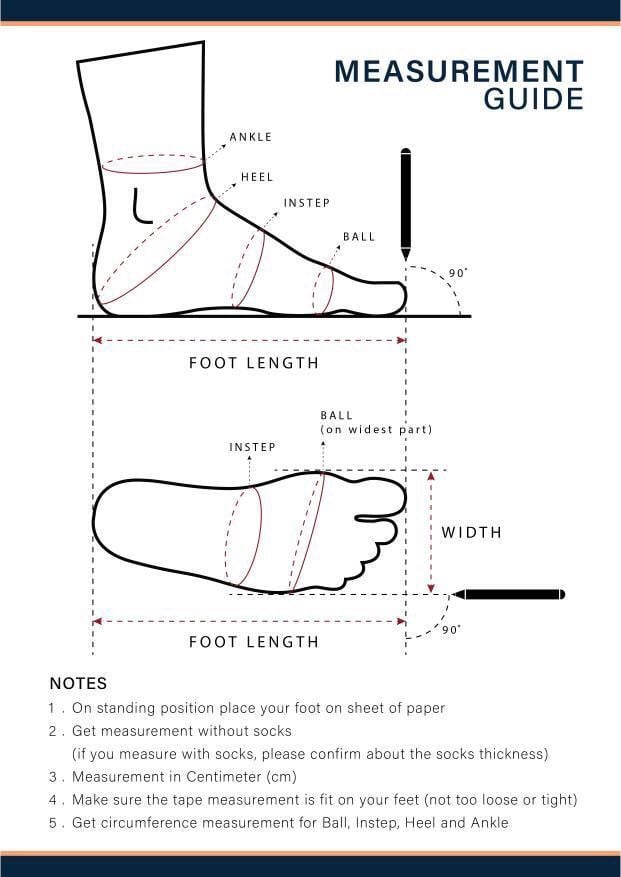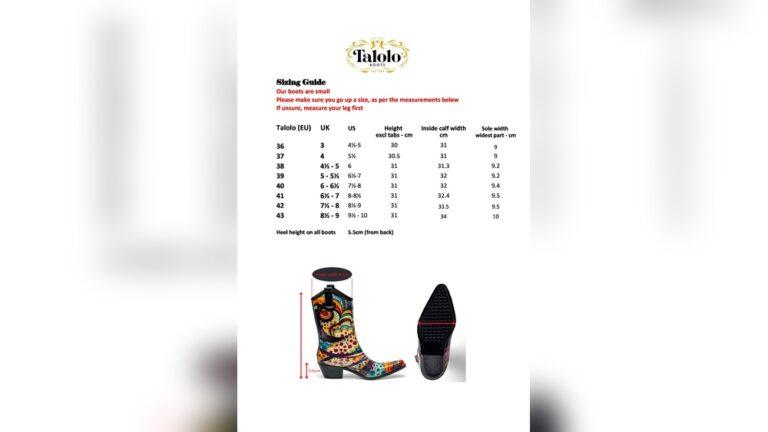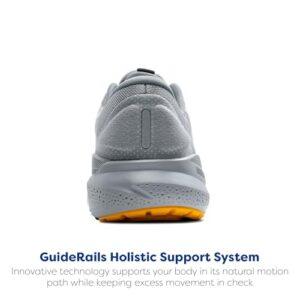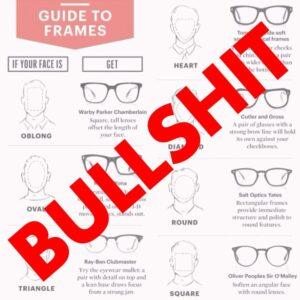Are you wondering, “Should I size up for boots?” You’re not alone. Finding the perfect fit for boots can be tricky because they don’t fit like regular shoes.
Your feet might feel tight at first, or maybe you worry they’ll be too loose and uncomfortable. But here’s the secret: the right fit isn’t just about the number on the label. It’s about how your boots feel when you move, walk, and even stand for hours.
You’ll discover simple tips to help you decide whether sizing up is the smart choice for your boots—so you can enjoy comfort and style every step you take. Keep reading to find out how to avoid common boot fitting mistakes and get the perfect pair that fits just right for you.

Credit: www.blundstone.com
Boot Sizing Basics
Choosing the right size for boots can be tricky. Boots feel different from regular shoes. Knowing how they fit helps you pick the best size. This guide explains the basics of boot sizing. It covers the key differences between boots and shoes. Also, it compares how boots fit versus sneakers. Understanding these points makes buying boots easier and more comfortable.
Differences Between Boots And Shoes
Boots usually cover the ankle or higher. Shoes mostly stay below the ankle. Boots often use thicker materials for protection and support. Shoes are lighter and more flexible. Boot soles tend to be thicker and harder. Shoes have softer and thinner soles. Boots may feel tighter around the foot and ankle. Shoes often have a snug but lighter fit. The shape inside boots can be more rigid. Shoes often have more space for foot movement.
How Boots Typically Fit Compared To Sneakers
Boots often fit tighter in length but roomier in width. Sneakers usually fit closer to the foot all around. Boots need extra space for thick socks and foot swelling. Sneakers fit more like a second skin. Boots are designed to hold your foot firmly. Sneakers allow more flexibility and movement. Boots might feel stiff at first but soften with use. Sneakers feel soft and flexible from the start. Boots require careful sizing to avoid discomfort. Sneakers give more leeway in sizing.

Credit: www.blundstone.com
Reasons To Size Up
Choosing the right boot size can be tricky. Many find that sizing up offers practical benefits. Boots that are too tight cause discomfort and cut off circulation. Sizing up allows for a better fit and more comfort in daily use.
Foot Swelling Throughout The Day
Feet naturally swell after hours of standing or walking. Boots that fit perfectly in the morning may feel tight by evening. A larger size gives your feet space to expand. This prevents pinching and pain as your feet change size.
Room For Thick Socks And Insoles
Thick socks add warmth and cushioning but take up space inside boots. Insoles also require extra room to fit comfortably. Sizing up ensures enough space for both socks and insoles. This keeps boots comfortable and avoids pressure on your feet.
Comfort During Extended Wear
Boots often need to be worn for long hours. Tight boots cause blisters, soreness, and fatigue. A slightly larger size reduces pressure on your toes and heels. It helps keep your feet comfortable through extended wear.
When To Size Down
Knowing when to size down for boots is as important as knowing when to size up. Boots differ in shape and design, so sometimes a smaller size fits better. Choosing a size down can improve comfort and performance in certain cases. Understanding these situations helps you avoid common fitting mistakes and enjoy your boots fully.
Boots That Run Large
Some boot brands tend to run large by design. This means their boots have extra space inside. Sizing down in these boots offers a snug and secure fit. Examples include many hiking and work boots that have roomy toe boxes. Sizing down prevents your feet from sliding inside the boot. This keeps your steps stable and reduces blisters.
Manufacturer Recommendations
Many boot makers give clear size advice. They often suggest sizing down if you wear thick socks. Some recommend going down half a size for a better fit. Checking the brand’s size chart can save time and hassle. Following their advice helps match the boot to your foot shape. This leads to better comfort and durability.
Effects Of Sizing Down On Fit
Sizing down makes boots tighter around the foot. This can increase support and control, especially in active use. A smaller size reduces extra space that causes foot movement. But too small can cause pressure and pain. It is important to try boots on and walk in them. Proper sizing down means the boot fits well without discomfort.
Half Sizes And Fit
Choosing the right size for boots can be tricky, especially when your feet fall between two sizes. Half sizes play a crucial role in how boots fit and feel. Understanding how half size differences affect comfort helps you avoid common sizing mistakes. This section explains the impact of half sizes, how to choose between them, and tips for handling in-between sizes.
Impact Of Half Size Differences
Half size differences may seem small but can change the fit a lot. Boots that are half a size too small feel tight and uncomfortable. They can pinch your toes or cause blisters after walking. Boots half a size bigger may feel roomy but can cause your feet to slide inside. This may lead to blisters on the heel or instability when walking. Half sizes help provide a better fit by balancing comfort and support.
Choosing Between Half Sizes
Pick the half size that matches your foot length and width best. Measure your foot on a flat surface for accuracy. If your foot is wider, choosing the larger half size helps avoid tightness. For narrow feet, the smaller half size often fits better. Consider the boot type too. Work boots may need extra space for thick socks. Fashion boots usually fit snugger for style and shape.
In-between Size Strategies
Feet often fall between two half sizes. In such cases, size up for more comfort and room. Your feet swell during the day, so a bit of extra space prevents pain. Try thick socks with the boots to check fit before buying. Use insoles or heel grips to adjust a slightly larger boot. Avoid boots that feel too tight at first; they rarely stretch enough to fit comfortably.
Width And Shape Considerations
Width and shape affect how boots fit your feet. Understanding these factors helps you decide whether to size up.
Boots come in different widths and shapes. Choosing the right one prevents discomfort and foot pain. Pay close attention to these details before buying.
Measuring Boot Width
Measure the widest part of your foot with a tape measure. Do this while standing to get an accurate size. Compare your measurement with the boot’s width options. Boot widths usually range from narrow to wide.
Wide Vs Narrow Feet Adjustments
Wide feet need boots with more room across the toes and sides. Narrow feet require tighter boots to avoid slipping. Sizing up can help wide feet but may cause loose fit for narrow feet. Choose boots designed for your foot width to ensure comfort.
Last Shape And Its Impact On Fit
The last is the mold used to shape boots. It affects how the boot fits your foot’s contour. Some lasts are round, some are pointed, and others are square. A last that matches your foot shape means better comfort. Knowing your foot shape helps pick boots that fit well without sizing up unnecessarily.
Tips For Trying On Boots
Trying on boots correctly helps you find the best fit and comfort. Boots need to feel good from the start. The right fit can prevent pain and damage to your feet. Follow these tips to check the fit carefully before buying.
Testing Fit With Different Socks
Wear the socks you plan to use with the boots. Thin socks may make boots feel loose. Thick socks can make boots tight. Try different thicknesses to see what fits best. This step helps you avoid surprises later.
Walking And Standing Fit Checks
Stand and walk inside the boots. Notice if your heel slips or if toes hit the front. Walk on different surfaces if possible. Pay attention to pressure points or tight spots. A good fit feels secure but not tight.
Lacing Techniques For Better Fit
Use laces to adjust the boots to your foot shape. Tighten the laces near the ankle for support. Loosen the top laces for comfort. This method can improve fit without changing size. Experiment with lacing styles for best results.
Common Fit Issues
Boots must fit well to keep feet comfortable and safe. Common fit issues can cause pain and affect how you walk. Understanding these problems helps you decide if you should size up or not. Below are typical fit problems many face with boots.
Heel Slippage
Heel slippage happens when your heel lifts out of the boot while walking. This causes blisters and reduces stability. Boots that are too big often lead to heel slippage. Proper fit should hold the heel snugly without tightness.
Toe Pinching
Toe pinching occurs when the front of the boot squeezes your toes. It causes discomfort and can lead to blisters or bruises. Boots that are too small or narrow cause this problem. Your toes need enough space to move freely.
Pressure Points And Discomfort
Pressure points form where the boot presses too hard on certain parts of your foot. This causes pain and can create sores over time. Boots with poor fit or wrong shape create these pressure spots. A good boot fits evenly and does not hurt anywhere.

Credit: stridewise.com
Customizing Fit
Finding the perfect fit for boots is not always about choosing the right size. Sometimes, small adjustments make all the difference. Customizing the fit helps make boots comfortable and supportive. This section explores simple ways to improve how your boots feel.
Using Insoles And Inserts
Insoles add extra cushioning inside the boots. They can improve comfort and support. Inserts help fill extra space, preventing your feet from sliding. Different types of insoles target arch support, shock absorption, and warmth. You can easily swap insoles to suit your needs. This simple addition can make boots feel like they were made just for you.
Breaking In Boots
New boots often feel stiff at first. Breaking them in softens the material and shapes the boots to your feet. Wear them for short periods around the house. Gradually increase the time to avoid soreness. Use thick socks to protect your skin. Gentle stretching or bending helps loosen tight spots. Patience during this process leads to a better fit over time.
When To Seek Professional Adjustments
Sometimes, home fixes are not enough. A cobbler can resize or stretch boots for a perfect fit. They can also add padding or modify the heel area. Professionals use tools and techniques to adjust boots safely. This option is ideal for expensive or favorite pairs. Getting expert help ensures comfort without damaging the boots.
Frequently Asked Questions
Is It Better To Wear Bigger Boots?
Wearing bigger boots can provide extra room for foot swelling and thicker socks. Choose a slightly larger size for comfort and avoid tightness. Boots that fit too snugly cause discomfort and restrict movement. Always prioritize fit over size for the best boot experience.
Does Half A Size Make A Difference In Boots?
Yes, half a size can affect boot fit significantly. It influences comfort, toe space, and foot swelling during wear.
Is It Better For Boots To Be A Little Big Or A Little Small?
It’s better for boots to be slightly big. Feet swell during the day, so extra room prevents discomfort and blisters. Boots that are too tight cause pain and restrict movement. Choose a snug fit with enough space to wiggle your toes comfortably.
Is Your Boot Size Smaller Than Your Shoe Size?
Boot sizes often run about half a size smaller than regular shoe sizes. Always try boots on for the best fit.
Conclusion
Choosing the right boot size matters for comfort and fit. Feet can swell during the day, so a little extra space helps. Boots that are too tight cause discomfort and pain. Slightly larger boots allow room for thick socks and movement.
Always try boots on and walk around before buying. Remember, comfort beats exact sizing every time. Your boots should feel snug but not tight. This approach keeps your feet happy and healthy all day long.

Madison Clark is a footwear expert and the voice behind MyStyleGrid.com. She specializes in honest shoe reviews, style tips, and practical guides to help readers find the perfect pair for any occasion. With years of experience in blogging and content creation, Madison makes footwear knowledge simple, stylish, and easy to follow.







